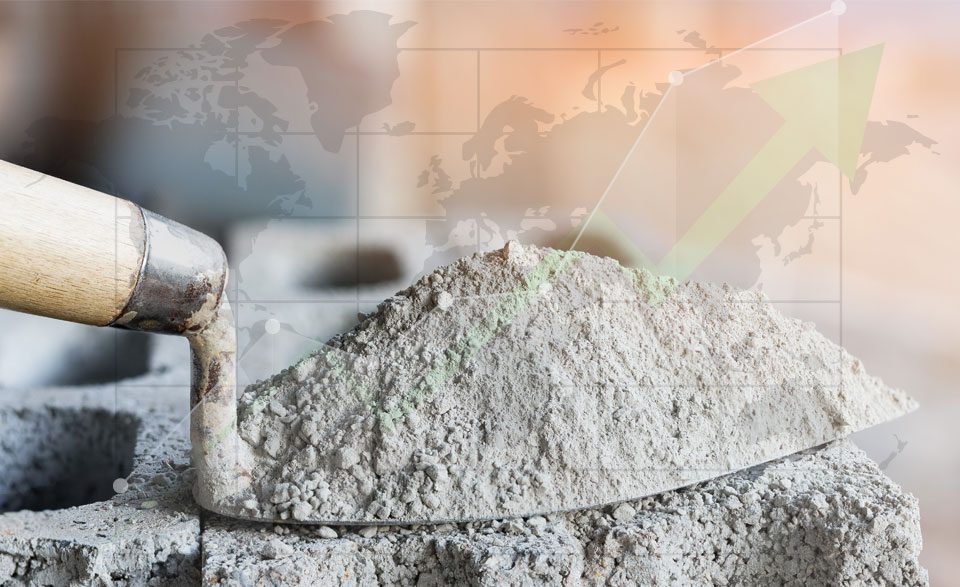
Transparent Concrete that can lower Electricity Costs at Homes by 30%
September 28, 2019
Top Five Construction Technology Trends
October 15, 2019Designing and installing decorative concrete is a lot more difficult than you might think. A veteran of many such installations offers a handful of tips to help you plan your next decorative concrete project.
Building Teams and their clients tend to think of a decorative concrete contractor as just another trade to be fit into the construction schedule, preferably at the lowest possible cost. But installing decorative concrete can be a delicate process, making planning for the construction crucially important.
At one time, decorative concrete came in only a few finishes—colored concrete, acid-etch stained, and stamped patterns. Today, there’s an almost infinite number of finishes available for horizontal and vertical surfaces—stamped, textured, integral and dust-on, colored, acid etch, dye (water and solvent), stampable overlays, self-level overlays, micro-toppings, stencil, engraved, form liners, diamond-polished, sandblast, exposed aggregate, and coatings (epoxy, urethane, and acrylic). Finishes can also be combined with other finishes.
The possibilities are limited only by the creativity of the designer and concrete contractor, yet it’s that very creativity that makes using decorative concrete so attractive. The problem is that concrete is very sensitive to a wide range of variables that can negatively impact the outcome.
To learn more about how to control these variables and thereby make decorative concrete a successful component of your next project, we’ve listed a few solutions that we’d gone through our experience.
1. Correctly access and manage client expectations
Projects should start with the owner providing full description, preferably in writing, of what the finished product should look like. Then the contractor can respond with what’s physically, aesthetically, and financially feasible. Sometimes owners have unreasonable expectations; early discussion can help manage those expectations.
WHAT BUILDING TEAMS SHOULD DO WHEN SPECIFYING DECORATIVE CONCRETE:
- Correctly assess—and manage—client expectations.
- Choose the right decorative concrete contractor.
- Carefully schedule the work of other trades to avoid undue damage to the concrete.
- Provide the right protection for the finished work.
- Negotiate an agreement with the client/owner on post-occupancy maintenance.
Decorative concrete usually isn’t structural, although specifications are often written as if they were. For instance, a specification might require concrete with high compressive, tensile, or flexural strengths cured in a prescriptive manner. Or a specification might require “green concrete” with a certain percentage of the portland cement substituted with fly ash, slag cement, or other pozzolanic materials.
Focus first on the requirements for a good decorative installation; otherwise, the work might meet all the structural requirements but be rejected for aesthetic reasons. For example, applying the usual curing specification for plain concrete to decorative work could have disastrous results, to the point of permanently damaging the look of decorative work. We urge Building Teams to use pre-job conferences to focus on the “dryness” of concrete or the slab relative humidity needed to start finish work rather than how to retain more moisture for curing purposes.
2. Choosing the right decorative concrete supplier
There can be significant variations in the creative abilities of decorative concrete contractors. If you want highly creative work you must find a contractor who can perform at that level and who also possesses good craft skills. Contractors tend to specialize in certain types of decorative concrete these days, so you’ll have to narrow your search to get the right one for your job.
A word of caution: Some decorative concrete contractors don’t place-and-finish concrete and wouldn’t know how to do it if asked, so you might have to hire a place-and-finish concrete contractor in addition to a decorative specialist.
3. Carefully schedule the work to avoid undue damage
Unfortunately, decorative concrete is highly susceptible to damage by other trades, more so than tile or other finished floor surfaces. Damage to concrete slabs can occur before decorative work begins or afterward. Plumbers have been known to spill cutting oil, hot solder, and plastic pipe glue on slabs. Carpenters seem to think that any flat surface was put there so that they could pile stacks of lumber on it. Even trade workers’ footprints on floors that are hard but still considered “green” can become visible when acid-stain finishes are applied. Shoe soles also contain oils that may act as a resist.
To avoid conflicts with other trades, we recommend scheduling this work starting on a Friday afternoon and proceeding through a weekend. With no one on the job site to cause problems or delays, he says that’s the best chance for success.
4. Providing the right protection
The common belief about concrete is that it gets hard, becomes even stronger over time, and that’s pretty much it—no need to worry further. But that is not the case. Concrete remains vulnerable because its chemistry continues to change as it ages, and water on slab surfaces can bring about other physical and chemical changes. That’s why it’s so important to include a plan for protecting the finished work in pre-job meeting discussions.
Covering material must allow moisture vapor from concrete to pass through while not allowing products that can stain to reach the surface of the concrete. The responsibility for the finished work is not a trivial matter. Since the concrete contractor cannot be expected to stay on the job until the concrete has fully cured, the responsibility for protecting the decorative work falls to the general contractor. However, that does not absolve the decorative contractor of all responsibility. The subcontractor should suggest the best protective products to use and perhaps even install them the first time.
5. Long term maintenance plan
A long-term maintenance plan should be part of the discussion your Building Team has with the client and facilities staff before construction begins. There are several ways to seal decorative work; each sealer provides a unique appearance. If an owner wants a glossy “wet look,” an epoxy, polyaspartic urethane, or acrylic finish is a good choice. These finishes must be renewed per the manufacturer’s recommendation. The accepted standard is that pedestrians should walk on the sealer, not on the concrete.
If the owner wants a natural concrete look without a glossy appearance, there are penetrating sealers on the market that restrict pore openings so that dirt and other staining materials will not penetrate the surface.
Diamond-polished floors present additional maintenance problems. Owners typically want these floors to have a high-gloss shine, but dirt and fine grit become abrasive under foot traffic, dulling the surface gloss over time. Some big-box retail companies have maintenance programs to remove dirt and grit on a frequent schedule. In grocery stores, food spillage must also be removed and cleaned as it occurs.
The inspirational aspect of Decorative Concrete
There are good reasons for the growing popularity of decorative concrete. It’s in our nature as humans to surround ourselves with creative expression and color; we like to be emotionally pleased by our environment.
Today, there are many more options for Building Teams to provide that kind of satisfaction through the use of decorative concrete. That’s why Building Teams need to work with their decorative concrete contractors to meet these heightened client expectations and ensure a long and useful life for these beautiful, inspiring surfaces.
Modern additives modify precisely that timespan; however, the amount of additive added to the mix is very important. Virtue Industries manufactures ready-mix concrete under high-end expert supervision to ensure high-quality end products.




